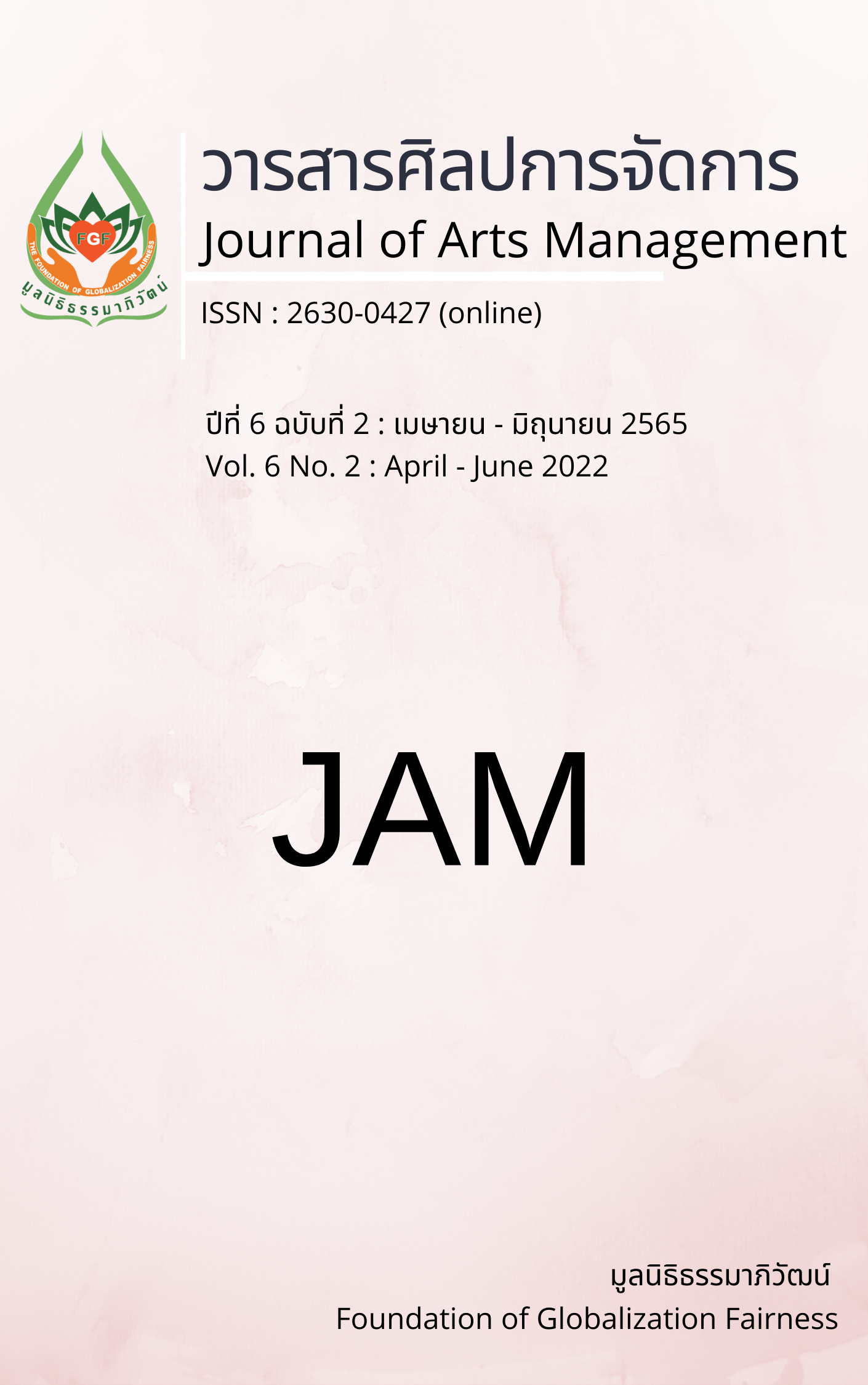The Strategy of Watershed Area Community Management on Flood Disaster Prevention and Solution
Main Article Content
Abstract
This article aimed to present a strategic plan and community solution to prevent and solve flood problems in the middle branch watershed. The methodology employed was qualitative research, gathering data by in-depth interviews of 185 people and focus group discussions with the stakeholders in the area 5 times, 11 people each time, for a total of 55 people. The research results were found as follows: the strategy of watershed area community management on flood disaster prevention and solutions that will lead to the formulation of plans, namely, preparation strategies, flood prevention strategies, flood management strategies, strategic remedy strategies and strategies for sustainable solutions in order to meet the goals set forth in both the development dimension for sustainability, the efficiency dimension in resource management, the dimension of quality of flood management, and the effectiveness dimension of driving while operating in an emergency, which must be driven by 16 strategic plans, 84 missions, and 35 indicators of success in order to the public. So, this is for the people, community leaders, network partners, department of government, private sector networks, and public charity organizations in the area integrated together to achieve the objectives and goals as specified.
Article Details

This work is licensed under a Creative Commons Attribution-NonCommercial-NoDerivatives 4.0 International License.
Views and opinions appearing in articles in the Journal of Arts of Management It is the responsibility of the author of the article. and does not constitute the view and responsibility of the editorial team I agree that the article is copyright of the Arts and Management Journal.
References
Chen, X., & Phakdeephirot, N. (2021). Comparison and analysis of the methods for measuring the sustainability of farmers’ livelihoods. International Journal of Multidisciplinary in Management and Tourism, 5(2), 87–99. https://doi.org/10.14456/ijmmt.2021.9
Debnath, R. (2012). Sustainable flood management. Hydropower & Dams.
Ho, P., & Thepchalerm, T. (2021). Factors affecting green practices adoption in maize stalks, cobs, and peels disposal: A case study of Chiang Rai maize farmers. International Journal of Multidisciplinary in Management and Tourism, 5(2), 47–55. https://doi.org/10.14456/ ijmmt.2021.6
Institute for Population and Social Research, Mahidol University. (2012). Assessing and developing social assistance system in crisis situation. Ministry of Social Development and Human Security.
Nakhon Sawan Chamber of Commerce. (2011). The value of economic damage from the 2011 great flood. The Journal of Chamber of Commerce, 14(155), 25-38.
Nanan, P., & Sachdev, H. (2021). The integration of a systematic thinking science and cross-impact analysis for a holistic view of sustainable agriculture development: A case study in Phraek Nam Daeng Sub-District, Amphawa District, Samut Songkhram Province. Journal of Multidisciplinary in Humanities and Social Sciences, 4(3), 1238–1253.
Phongphit, S. (2008). Concepts and practices of local development strategies. Charoenwit Printing.
Royal Irrigation Department. (2011). Chao Phraya River basin management 2011 and guidelines for flood relief by dredging the Chao Phraya River. Ministry of Agriculture and Cooperatives.
Special Operations Center for Flood Prevention and Solution Windstorms and landslides in Nakhon Sawan Province. (2011). Summary of the flood situation in Nakhon Sawan Province. Nakhon Sawan City Hall.
Tan C. C., Damnoen P. S., Toprayoon Y., Dabjan N., Damkam K. (2022). An exploratory study of the spirituality-oriented experiences of tourists. In Srivastava P., Thakur S. S., Oros G. I., AlJarrah A. A., Laohakosol V. (eds) Mathematical, Computational Intelligence and Engineering Approaches for Tourism, Agriculture and Healthcare. Lecture Notes in Networks and Systems, 214, 307-314. https://doi.org/10.1007/978-981-16-3807-7_25
United Nations and Economic Commission for Europe. (2002). Best practices on flood prevention, protection and mitigation, water directors of the European Union (EU) in Denmark Copenhagen. Retrieved May 3, 2013, from https://ec.europa.eu/environment/ water/flood_risk/pdf/flooding_bestpractice.pdf
